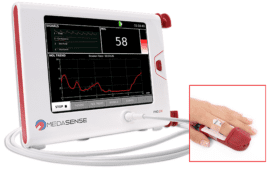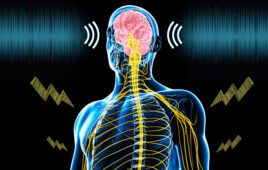The ability to control the transfer of molecules through cellular membranes is an important function in synthetic biology; a new study from researchers at Harvard’s Wyss Institute for Biologically Inspired Engineering and Harvard Medical School (HMS) introduces a novel mechanical method for controlling release of molecules inside cells.
Described in the American Chemical Society Synthetic Biology journal, the team describes using protein polymers known as “R bodies”, which are found in certain bacteria, as retractable nanoneedles that can extend to puncture cellular membranes and release molecules on command.
“This is one of nature’s innovations, but the discovery here is our ability to translate this from nature into a system that we can now engineer and control,” said Wyss Core Faculty member Pamela Silver, Ph.D., who is also Professor of Biochemistry and Systems Biology at HMS, and senior author on the study.
Functioning like a biological actuator, R bodies respond to pH levels to extend from a tightly bound coil to a long, thin structure akin to a nanoscale needle or javelin. In nature, the bacteria containing R bodies are shed by a “killer strain” of single-celled organisms called paramecia. When a paramecium of a different strain ingests these shed bacteria containing R bodies, a difference in pH level between the two strains causes the R bodies to extend and puncture the bacteria’s cell walls, releasing toxins that kill the host paramecium. But in synthetic biology, R bodies now represent a whole new way of controlling delivery of beneficial molecules such as biologic therapies, pharmaceutical drugs or other payloads to specific cells.
“Our research establishes R bodies as biological machines that we can use to break through membranes,” said Jessica Polka, Ph.D., a Postdoctoral Research Fellow at the Wyss Institute and HMS, who was first author on the study. “These actuators don’t consume molecular fuel and are extremely robust; we believe they could one day be used to deliver material to mammalian cells.”
Importantly, R bodies present a physical rather than genetic strategy for manipulating cells. At high pH levels, R bodies resemble a coil of ribbon. But at lower pH levels, they undergo a conformational change converting them into pointy hollow tubes capable of puncturing through membranes, breaking that barrier and releasing any cargo contained inside. By modifying the pH level that triggers this response, R bodies become a tunable platform for controlling release of toxins or therapies.
“These R bodies also can be thought of as scaffolds for new biomaterials,” said Silver. “By decorating these polymers with different kinds of metals or other materials with properties of interest, we could potentially develop a range of actuator-like, nanoscale structures.”
What’s also unique about R bodies is their reversibility. Although they extend in low pH, they retract back into a tight coil when the pH level rises. In biological systems, reversibility is not a common property but is of much interest to synthetic biologists like Polka and Silver. Since bacterial and eukaryotic cells all contain compartmentalized membranes, a reversible system for breaking barriers establishes a mechanical strategy for precisely controlling cells.
This advance could potentially lead to a range of applications in biotechnology and medicine such as creation of new programmable biomaterials, drug delivery, and ecosystem management.
“There are so many amazing mechanisms engineered by Nature, and this is a great example of how we can mine living systems for unique biological elements and adapt them to develop programmable technologies for high value applications using synthetic biology,” said Wyss Institute Founding Director Donald Ingber, M.D., Ph.D., who is the Judah Folkman Professor of Vascular Biology at HMS and the Vascular Biology Program at Children’s Hospital and Professor of Engineering at the Harvard John A. Paulson School of Engineering and Applied Sciences.




